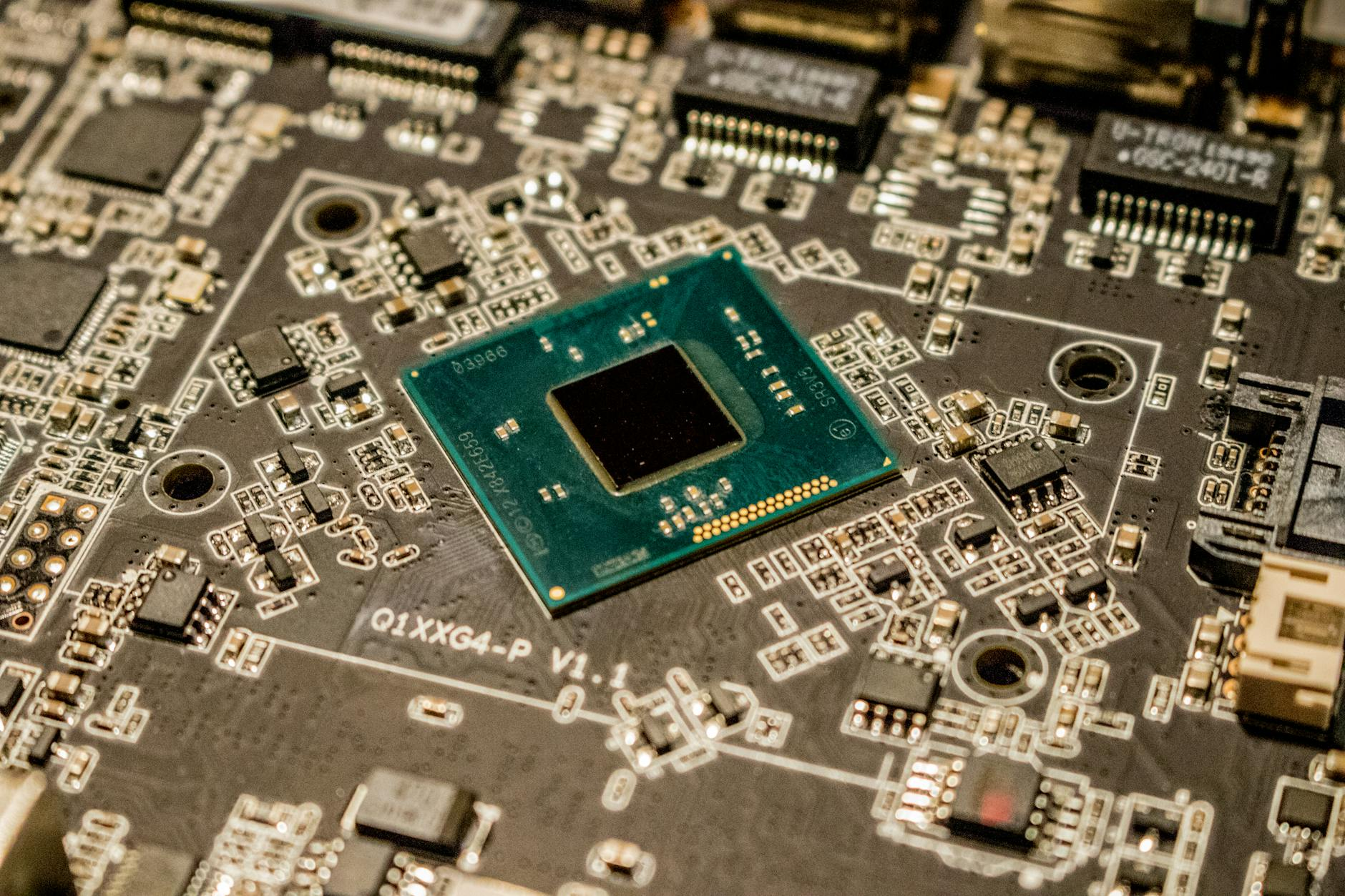Estimated reading time: 6 minutes
Marvell Technology Q2 2026 Earnings: Record Revenue
August 28, 2025
Executive Summary
Marvell Technology, Inc. (NASDAQ:MRVL) reported its Q2 2026 earnings on August 28, 2025, showcasing robust AI chip growth. The company achieved ✔ $0.67 non-GAAP EPS, meeting estimates of $0.67, and record revenue of ✔ $2.006 billion, slightly above the $2.01 billion forecast, driven by strong data center demand.
However, GAAP gross margin of ✘ 50.4% fell short of expectations due to higher production costs. Demand volatility in enterprise networking and carrier infrastructure poses ongoing risks.
Stock analysis highlights Marvell’s AI chip growth, tempered by demand volatility.
Summary of Beats, Misses, and Forward Guidance
| Metric | Actual | Expectation | Outcome |
|---|---|---|---|
| Q2 Non-GAAP EPS | $0.67 | $0.67 | ✔ Met |
| Q2 Revenue | $2.006 billion | $2.01 billion | ✔ Beat |
| Q2 Non-GAAP Gross Margin | 59.4% | 59.5% | ✔ Met |
| Q2 GAAP Gross Margin | 50.4% | 52.0% | ✘ Miss |
| Q3 2026 Revenue Outlook | $2.1 billion | $2.05 billion | ✔ Raised |
1. Q2 2026 Financial Performance
Marvell demonstrated strong performance in its Q2 2026 earnings, driven by AI and data center demand:
- Total Revenue: ✔ $2.006 billion, up 58% YoY from $1.27 billion, slightly beating estimates of $2.01 billion due to custom silicon growth.
- Data Center Revenue: ✔ Up 5% QoQ, contributing over 75% of total revenue, driven by AI and cloud infrastructure demand.
- Non-GAAP EPS: ✔ $0.67, flat YoY, meeting estimates, supported by operational efficiencies and higher sales volumes.
- Non-GAAP Gross Margin: ✔ 59.4%, stable with 59.5% estimates, reflecting strong pricing in data center products.
- GAAP Gross Margin: ✘ 50.4%, down from 52.0% expected, due to higher production and supply chain costs.
- Operating Expenses: Up 10% YoY to $495 million, reflecting investments in R&D for AI and custom silicon solutions.
2. Growth Drivers for AI Chip Growth
Marvell’s AI chip growth is driven by strategic initiatives in data infrastructure:
- Custom Silicon: Significant revenue contribution from tailored AI chips for hyperscale cloud providers, boosting data center sales.
- Data Center Expansion: Mid-single-digit QoQ growth in data center revenue, driven by AI workload demand and infrastructure buildouts.
- Optics Portfolio: 21% CAGR projected through 2028, supporting high-speed connectivity for AI and cloud applications.
- Strategic Divestitures: Automotive Ethernet sale streamlined operations, focusing resources on high-margin AI and data center segments.
Custom silicon fuels Marvell’s AI chip growth success.
3. Valuation and Market Reaction
Marvell’s stock faced pressure post-earnings despite strong results:
- Market Reaction: Shares fell ✘ 3% in after-hours trading, closing at $76.24, driven by concerns over GAAP margin miss and non-AI segments.
- Valuation: Forward P/E of 15.39x, attractive for value investors, though tempered by demand volatility in non-AI markets.
- Market Cap: Approximately $65.2 billion, reflecting Marvell’s strong position in the semiconductor market despite challenges.
4. Demand Volatility
Marvell faces challenges from demand volatility in non-AI segments:
- Enterprise Networking: ✘ Flat growth, impacted by reduced enterprise IT spending amid economic uncertainty.
- Carrier Infrastructure: ✘ Slow recovery, with telecom providers delaying upgrades, pressuring revenue diversification.
- Supply Chain Costs: ✘ Higher production costs reduced GAAP gross margins, impacting overall profitability.
5. Q3 2026 Forward Guidance
Marvell’s Q3 2026 outlook reflects optimism in AI-driven growth:
- Revenue: Forecasted at ✔ $2.1 billion, above estimates of $2.05 billion, driven by sustained data center demand.
- Non-GAAP EPS: Expected at $0.70–$0.74, aligning with estimates, supported by margin expansion.
- Non-GAAP Gross Margin: Projected at 59.5%–60%, stable with Q2, reflecting pricing strength in AI chips.
- Operating Expenses: Expected at $500 million, up slightly, due to continued R&D investments in AI solutions.
Marvell’s guidance reflects AI chip growth despite non-AI segment challenges.
6. Competitive Landscape for Stock Analysis
Marvell operates in a competitive semiconductor environment:
- AI Chip Competitors: ✘ NVIDIA and AMD dominate high-performance AI chips, challenging Marvell’s market share.
- Enterprise Networking: ✘ Cisco and Broadcom pressure Marvell with broader portfolios and aggressive pricing strategies.
- Advantage: Custom silicon expertise positions Marvell as a leader in tailored AI solutions for hyperscalers.
7. Risks and Challenges for Investors
Key risks impacting Marvell’s performance include:
- Demand Volatility: ✘ Weak enterprise networking demand limits revenue diversification, impacting growth stability.
- Supply Chain Costs: ✘ Rising production costs could further erode GAAP margins if not offset by pricing power.
- Competition: ✘ NVIDIA and AMD’s dominance in AI chips poses risks to Marvell’s market share and growth.
- Economic Uncertainty: ✘ Global IT spending slowdowns could reduce demand for non-AI semiconductor products.
- R&D Expenses: ✘ 10% YoY increase in operating expenses may pressure profitability if AI growth slows.
Investors must balance Marvell’s AI chip growth with demand and cost risks.
8. Industry Impact of Marvell’s Performance
Marvell influences the semiconductor sector with its strategic focus:
- AI Infrastructure: Custom silicon solutions drive hyperscaler adoption, setting standards for AI chip performance.
- Optics Innovation: High-speed connectivity advancements support cloud and AI workloads, influencing industry trends.
9. Guidance to Investors
Q2 2026 earnings present opportunities with caution:
- Growth Investors: ✔ Consider Marvell for its 15.39x forward P/E and AI chip growth, but monitor demand volatility in non-AI segments.
- Risk-Averse Investors: ✔ Diversify with stable tech firms like NVIDIA to mitigate Marvell’s ✘ enterprise networking risks.
- Opportunistic Investors: ✔ Capitalize on dips, given AI-driven revenue growth, but expect ✘ volatility from economic uncertainty.
- Hedging Strategies: ✔ Use covered calls to manage ✘ stock volatility, especially during earnings seasons.
- Segment Monitoring: ✘ Track enterprise networking recovery, which could impact revenue diversification efforts.
- Economic Sensitivity: ✘ Evaluate global IT spending, as slowdowns could affect non-AI revenue streams.
Balance Marvell’s AI chip growth with demand volatility.
10. Conclusion
Marvell’s Q2 2026 earnings, with ✔ $2.006 billion revenue and ✔ $0.67 EPS, underscore robust AI chip growth, driven by custom silicon.
✘ 50.4% GAAP gross margin and demand volatility reflect challenges in non-AI segments.
Marvell advances its AI chip growth, but success hinges on diversifying revenue streams.
11. Disclaimer
This stock analysis is for informational purposes only and does not constitute financial, investment, or legal advice. Investors should conduct due diligence and consult a financial advisor. Marvell’s stock faces risks from demand volatility, supply chain costs, competition, economic uncertainty, and rising R&D expenses, which could impact performance. Past performance is not indicative of future results. Qunatical assumes no liability for losses from actions based on this analysis.
Marvell’s ✔ revenue and EPS performance and AI chip growth are offset by ✘ GAAP margin miss and demand volatility, requiring cautious navigation for investors.










